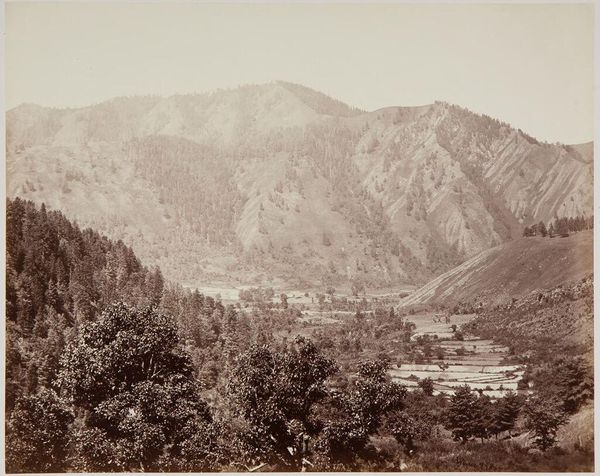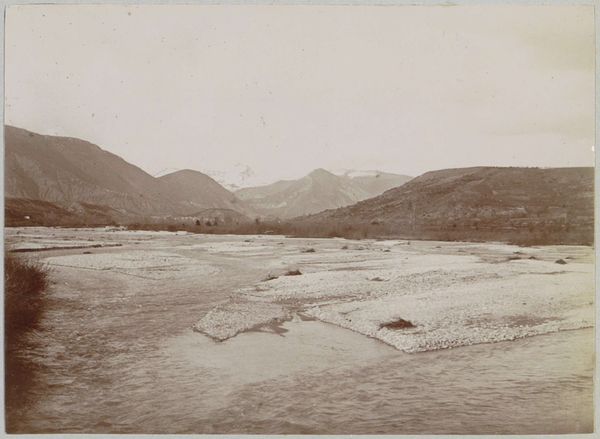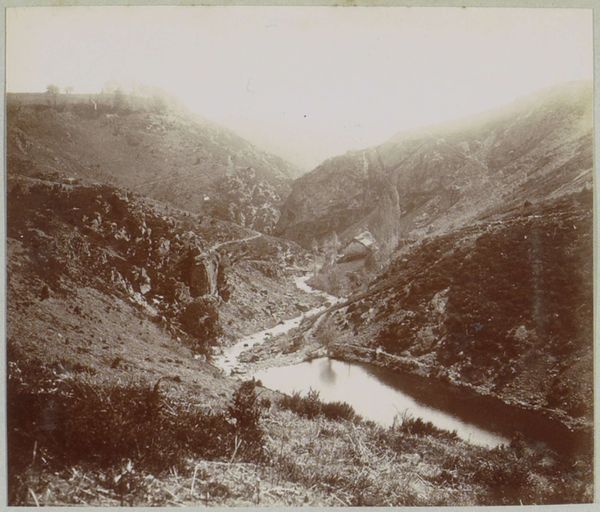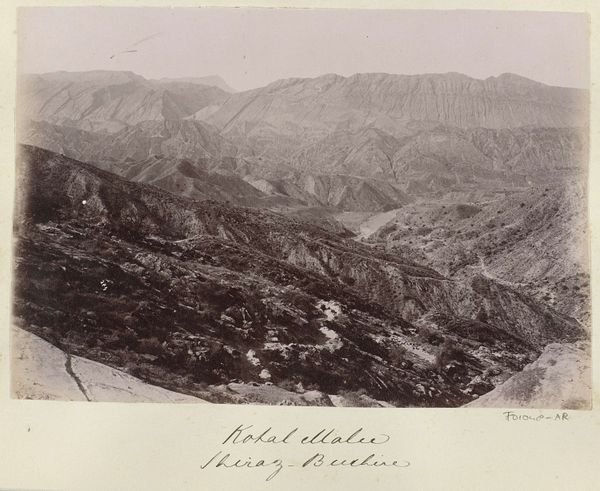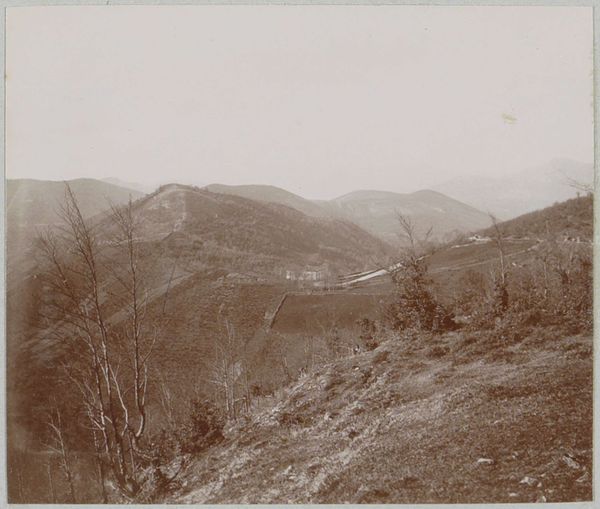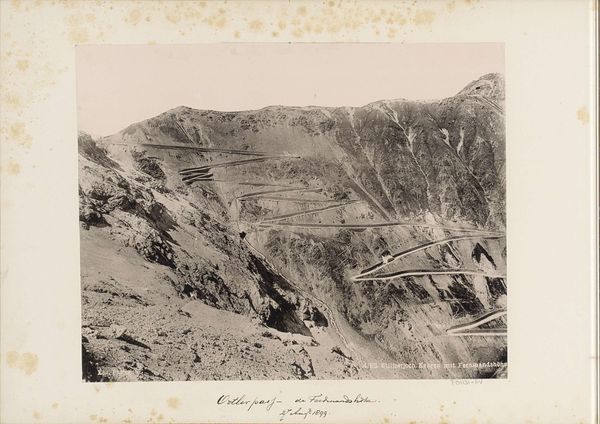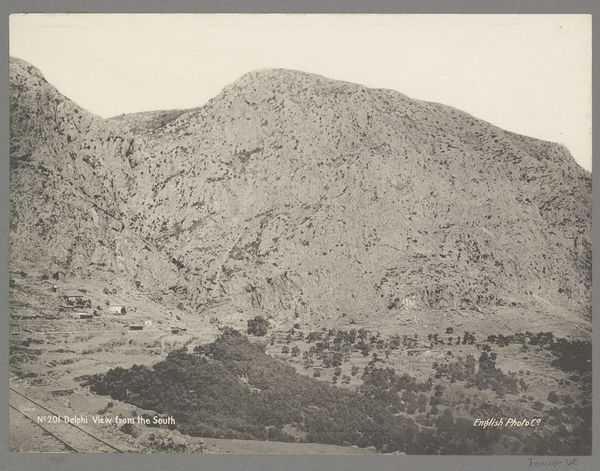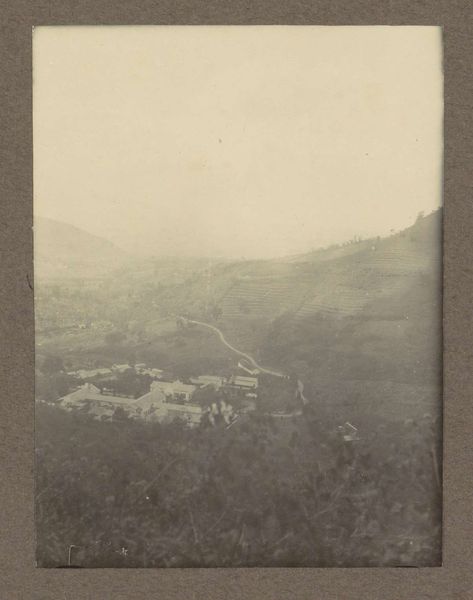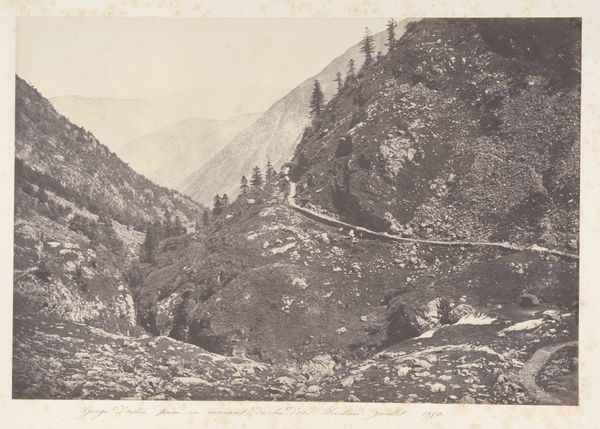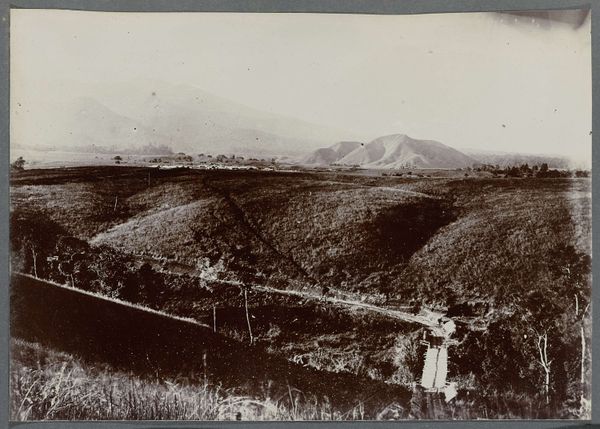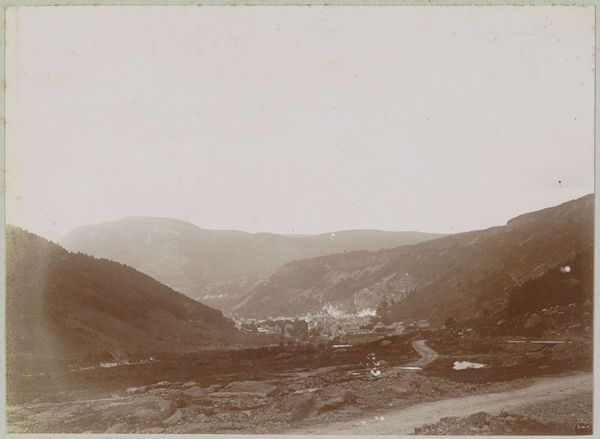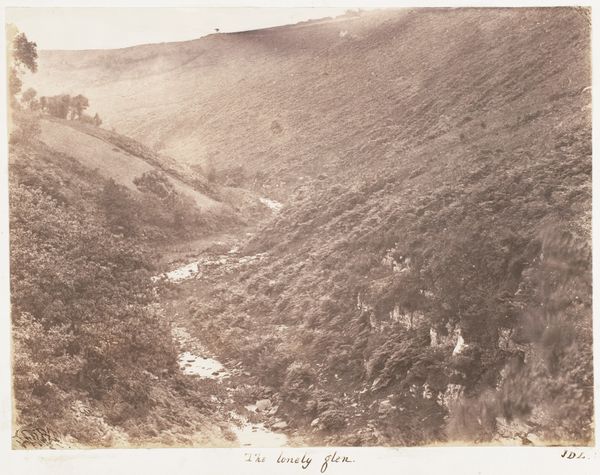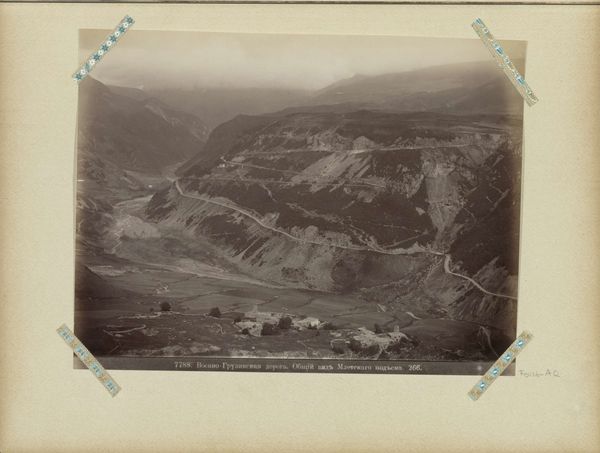
photography, albumen-print
#
landscape
#
charcoal drawing
#
nature
#
photography
#
albumen-print
Dimensions: height 227 mm, width 288 mm
Copyright: Rijks Museum: Open Domain
Curator: Looking at this image, one is immediately struck by a feeling of disruption and stillness, a world arrested mid-collapse. Editor: Yes, a disquieting beauty. We are looking at "Landverschuivingen in de Neo-vallei in Japan na een aardbeving" or “Landslides in the Neo Valley in Japan after an Earthquake,” an albumen print of a photograph taken before 1892. Curator: Before photography became completely divorced from ideas about truth, images like this were circulated globally. I think it is important to look at how it frames not just landscape, but an experience of disruption and ecological devastation in relation to larger questions of power and representation. Editor: The albumen print lends the image a sepia-toned gravity; it memorializes the disaster. One is reminded of the hands involved in preparing the photographic materials and taking and printing this image – the social implications of a relatively new mode of documenting geological catastrophe for a European audience. Curator: Absolutely, and the photograph documents how human events become inseparable from the natural. Where do we locate responsibility within a frame like this? Was this image intended to portray nature’s overwhelming power, or to point towards social inequities within impacted communities? Editor: The choice of albumen print is interesting when we consider material access in late nineteenth-century Japan; albumen printing would likely have involved resources unavailable to average people who would have borne the material effects of earthquakes like this one. There’s an echo of the way those affected by disaster can be rendered voiceless. Curator: The formal elements of composition create an aesthetic tension between a sublime moment and tangible loss; the layered slopes speak to this interplay between aesthetic form and social responsibility. We must remember that even the most striking visuals are also the outcomes of specific sets of choices within human systems of power and belief. Editor: This tension really drives home the importance of interrogating not only what the image represents, but how it does so. Images never truly speak for themselves; the conversations that frame the image are part of its total production. Curator: Exactly, it allows us to consider the ways we read and remember catastrophe—its actors, its symbols, its underlying truths. Editor: By reflecting on these interconnected dynamics, the albumen print becomes an evocative witness to our complex interactions.
Comments
No comments
Be the first to comment and join the conversation on the ultimate creative platform.
